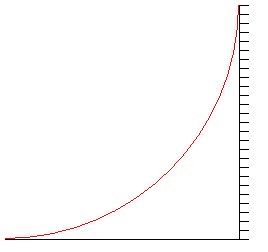Could there ever be a warp ship capable of warp 1,000,000?! With a hella strong hull and warp field?  Highly illogical.
Highly illogical.
 Highly illogical.
Highly illogical. Highly illogical.
Highly illogical.The Warp scale is like a percentage of infinity, where Warp 10 = 100% Infinite speed.

Oh, and yeah... Voyager's episode called "Threshold" IS CANON, regardless of what the writers or fans think, because it aired on TV. So tough.
I thought it was spelled "whoa."
The Warp scale is like a percentage of infinity, where Warp 10 = 100% Infinite speed.
As opposed to 1% infinite?
 Well, you know what I mean.
Well, you know what I mean.Oh, and yeah... Voyager's episode called "Threshold" IS CANON, regardless of what the writers or fans think, because it aired on TV. So tough.
I thought it was spelled "whoa."
The Warp scale is like a percentage of infinity, where Warp 10 = 100% Infinite speed.
As opposed to 1% infinite?
Oh, and yeah... Voyager's episode called "Threshold" IS CANON, regardless of what the writers or fans think, because it aired on TV. So tough.
Sure it's canon, but it has to be interpreted in a way that makes the screwed-up statements mean something other than what they were supposed to mean.

Oh, and yeah... Voyager's episode called "Threshold" IS CANON, regardless of what the writers or fans think, because it aired on TV. So tough.
Yes, it's part of the canon in the literal sense, but it's a common fan misconception that "canon" = "continuity." The canon isn't "what's real," because none of it is real. Every long-running fictional canon reinterprets, retcons, or ignores elements of its past, refining itself as it goes along. Since it is fiction rather than reality, it is intrinsically mutable, and its creators are fully entitled to disregard past elements of it if they like. Brannon Braga himself, who wrote "Threshold," has disowned it, declaring it out of continuity. And I doubt there'd be any other Trek producer who'd choose to dispute that. Besides, later treatments of transwarp in the show directly contradicted "Threshold," confirming that it is out of continuity.
Similarly, "The Alternative Factor" claimed that dilithium powered the ship and that any matter-antimatter interaction would annihilate the universe -- but later TOS episodes and everything else since have consistently stated that matter-antimatter reactions power the ship and dilithium channels that power.
It's safe to say that TAF is also out of continuity -- even though it is technically part of the canon. Canon and continuity are not synonymous. The canon is simply the core body of work as opposed to derivative works. But that core body is subject to reinterpretation. Not everything within the filmed canon is regarded as "real" by subsequent creators, or even by the same creators later on. It is ludicrous to say "It's canon regardless of what the writers think." Some fans seem to have this bizarre notion that canon is some dogma imposed on the show's creators by some higher power, like the studio or God or something. But it isn't. The show's creators decide what the core continuity of the series is assumed to be. If they say that something is out of continuity, there's nobody higher up to overrule them. It's their show. The only people who can overrule the decisions of the showrunners are the people who replace them later on. For instance, Jeri Taylor wanted her novels Mosaic and Pathways to be part of the official Voyager continuity, but as soon as she left and Brannon Braga became showrunner, her novels were ignored.
Now, the people in charge of ST are Abrams, Lindelof, Burk, Kurtzman, and Orci, and it's their decision what counts as part of the "real" continuity.
I thought it was spelled "whoa."
The Warp scale is like a percentage of infinity, where Warp 10 = 100% Infinite speed.
As opposed to 1% infinite?
Well, you know what I mean.



But I started this thread to know this: How fast could you traverse the universe at warp 1,000,000?
No, because the point at which the curve becomes a vertical line is a finite value and is NOT infinite.This is the Warp scale, from light speed at Warp 1 to infinite speed at Warp 10.
As you can see, it's a circular curve with Warp 10 at the edge where the gradient becomes vertical, hence infinite.
Remember, kids, the description in the Tech Manual is a riff on the description of the Infinite Improbability Drive in "The Hitchhiker's Guide to the Galaxy". In other words, it was a joke that Brannon Braga didn't get.

We use essential cookies to make this site work, and optional cookies to enhance your experience.
